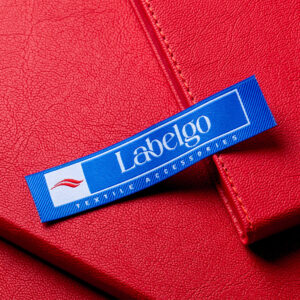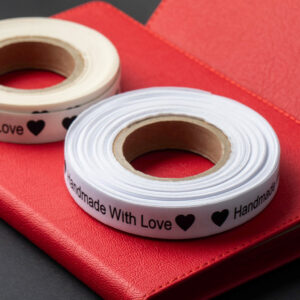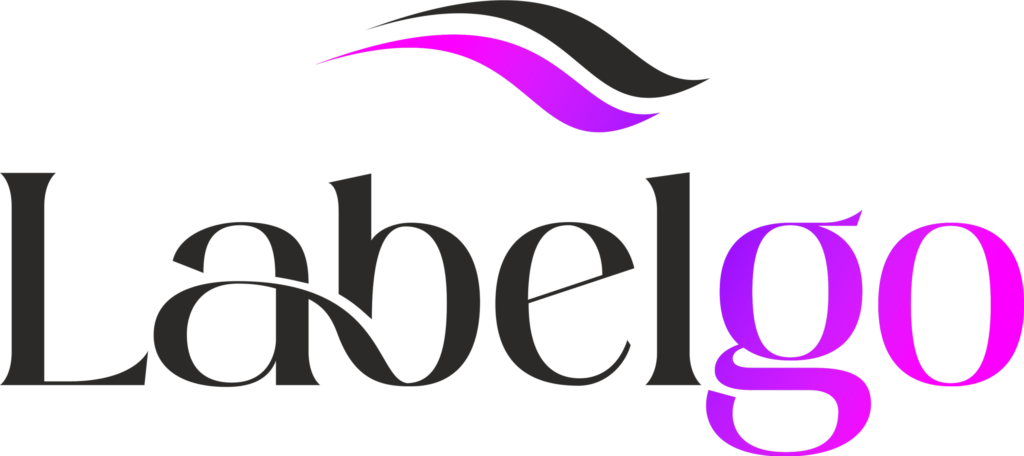Selecting the right label type is a strategic branding decision that directly impacts product perception, durability, and overall consumer experience. In a competitive fashion and accessories market, your label is not just an identifier—it is a long-term asset that shapes how your brand is recognized, valued, and remembered. This analysis outlines the operational, aesthetic, and performance-based differences between woven and printed labels to help you select the optimal solution for your product line.

1. Understanding the Strategic Role of Labels
Labels function as persistent brand touchpoints. They communicate quality, positioning, and brand story in a single glance. Before choosing between woven and printed labels, it is essential to assess your target segment, material surfaces, production volumes, and longevity requirements. For broader context on label psychology and brand impact, refer to “The Importance of Custom Labels in Building Brand Identity” and “How Custom Labels Enhance Customer Loyalty and Recognition.”
2. Woven Labels: Precision, Longevity, and Premium Brand Signaling
Woven labels are produced by weaving yarns together to form text, logos, or graphics. Their durability and elevated tactile finish make them a preferred solution for high-end and mid-tier fashion brands.
Key Strengths
High-End Aesthetic: Delivers a premium, textured appearance aligned with luxury positioning.
Long-Term Durability: Resistant to washing, abrasion, and fading—ideal for apparel with extended lifecycle expectations.
Color Accuracy in Yarn: Ensures consistent brand identity across production runs.
Tactile Presence: Enhances perceived craftsmanship, reinforcing brand credibility.
Best Use Cases
Designer apparel and outerwear
Denim, knitwear, sportswear
Accessories and lifestyle goods
Premium limited-edition collections
For a deeper breakdown of woven label capabilities, review “What Are Woven Labels? A Complete Guide”, “How Do Woven Labels Reflect the Quality of Your Brand?”, and “Everything About Woven Labels in the Fashion Industry.”

3. Printed Labels: Agility, Cost Efficiency, and Creative Flexibility
Printed labels apply ink onto materials such as satin, cotton, or polyester. They offer dynamic visual flexibility and cost-effective production for brands requiring speed and diverse graphic application.
Key Strengths
High Visual Detail: Superior for intricate designs, micro-details, gradients, and complex iconography.
Soft Handfeel: Ideal for applications where comfort is a critical purchasing factor.
Cost-Effective Configurations: Supports large runs, small batches, and fast onboarding of new designs.
Rapid Turnaround: Accelerates development cycles and drops.
Best Use Cases
Fast-fashion collections
Seam-sensitive garments (babywear, intimates)
Care instructions and compliance labeling
Seasonal or trend-driven releases
For label planning and compliance awareness, see “What Are Care Labels and Why Are They Legally Required?” and “Tips for Selecting the Best Label Size for Your Product.”
4. Side-by-Side Comparison
| Criterion | Woven Labels | Printed Labels |
|---|---|---|
| Durability | Excellent | Moderate |
| Detail & Graphics | Moderate | Excellent |
| Texture & Premium Feel | High | Medium |
| Color Range | Limited to yarn colors | Unlimited |
| Comfort | Medium | High |
| Cost | Higher | Lower |
| Ideal For | Premium and long-lasting garments | Trend-driven or detail-heavy designs |
5. Which One Should You Choose?
The optimal label solution depends on your brand objectives and operational needs:
Choose woven labels if durability, premium perception, and long-term brand equity are top priorities.
Choose printed labels if graphic complexity, comfort, and cost flexibility are essential drivers in your category.
For a multi-label strategy optimized by product type and positioning, refer to “Woven Labels, Cardboard Labels & Printed Labels: Find the Perfect Match for Your Brand.”
6. Future-Proofing Your Label Strategy
Emerging brands increasingly adopt hybrid label architectures—integrating woven labels for branding and printed labels for care instructions or fast-changing SKUs. Additionally, sustainable materials and digital configurators are reshaping how brands prototype and produce labels. Gain insights through “The Environmental Benefits of Using Sustainable Label Materials” and “The Benefits of Digital Label Design and Customization Tools.”
